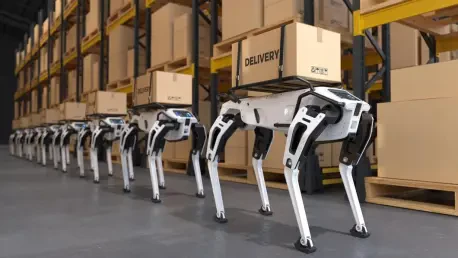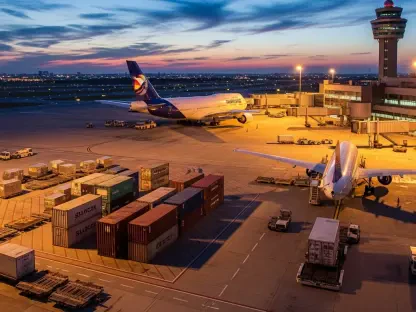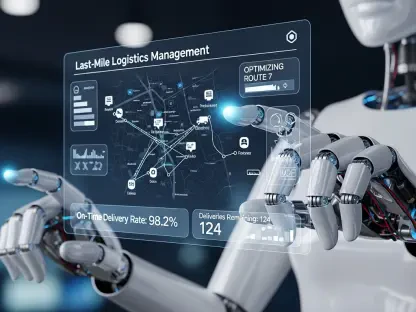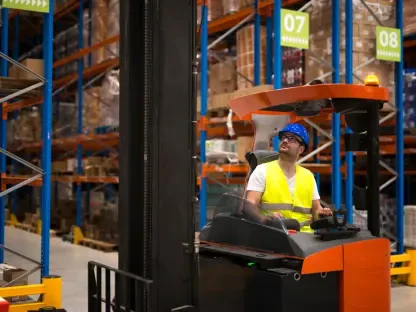The Rise of Ultra-Fast Delivery in E-Commerce
In today’s fast-paced digital marketplace, the ability to receive online orders in mere hours has shifted from a luxury to a fundamental expectation for millions of consumers worldwide. E-commerce has undergone a dramatic transformation over recent decades, evolving from a niche service to a cornerstone of global retail, driven by an unyielding demand for speed and efficiency. This shift has redefined how businesses operate, pushing companies to innovate relentlessly to meet customer needs for near-instant gratification.
Amazon stands at the forefront of this revolution, having established itself as a pioneer in logistics and delivery innovation. The company’s commitment to rapid fulfillment has set a benchmark that shapes industry standards, compelling competitors to race against time to keep pace. With major players like Walmart and Target striving to match similar delivery timelines, the pressure to deliver faster has intensified across the board.
Central to this transformation are cutting-edge technologies such as robotics and artificial intelligence (AI), which have become indispensable tools in streamlining operations. These advancements enable unprecedented levels of precision and speed, fundamentally altering the logistics landscape. As consumer expectations continue to rise, the integration of such technologies is no longer optional but essential for staying competitive in the e-commerce arena.
Inside Amazon’s Futuristic Warehouse: A Technological Marvel
Robotics and Automation in Action
At the heart of Amazon’s ability to achieve ultra-fast delivery lies its state-of-the-art facility in Bretigny-sur-Orge, France, which serves as a blueprint for automated warehousing. This warehouse is a symphony of technology, where robotic arms, automated machines, and intricate conveyor systems collaborate to sort, retrieve, and pack items with remarkable efficiency. The seamless operation of these systems drastically cuts down the time from order placement to dispatch.
These robots take on repetitive and labor-intensive tasks, significantly reducing human workload and minimizing errors in the process. By handling everything from inventory management to order packing, automation ensures consistency and speed that manual processes could never match. This not only boosts operational throughput but also allows for scalability across Amazon’s vast network of fulfillment centers.
Human workers remain integral to this ecosystem, working alongside technology to address complex tasks that require judgment and adaptability. The synergy between human effort and robotic precision creates a hybrid model that maximizes efficiency while maintaining a personal touch in problem-solving. This balance is crucial for ensuring that the system operates smoothly even under peak demand conditions.
AI-Driven Precision and Predictive Power
Beyond robotics, AI plays a pivotal role in enhancing Amazon’s warehouse operations by predicting consumer behavior and optimizing inventory management. Sophisticated algorithms analyze vast amounts of data to forecast purchasing trends, ensuring that high-demand products are readily available at strategic locations. This predictive stocking minimizes delays and keeps the supply chain agile.
AI also optimizes retrieval routes within the warehouse, calculating the fastest paths for robots to access items. This level of precision reduces order processing time, directly contributing to the ability to deliver within tight windows. Such efficiency is a game-changer, allowing Amazon to maintain its edge in a highly competitive market.
The impact of these AI-driven operations is evident in improved customer satisfaction metrics. By ensuring products are in stock and orders are fulfilled swiftly, the technology enhances the overall shopping experience. Data indicates that customers value this reliability, often citing speed and accuracy as key factors in their loyalty to the platform.
Challenges in Achieving Sub-2-Hour Delivery
Scaling robotic systems to handle a diverse range of products and varying warehouse sizes presents significant technical hurdles for Amazon. Not all items are easily managed by automated systems, especially those with irregular shapes or fragile compositions, requiring constant innovation in robotic design. Adapting technology to different environments without compromising speed remains a complex endeavor.
Logistical coordination for last-mile delivery within a two-hour timeframe adds another layer of difficulty. Urban congestion, unpredictable weather, and the need for precise routing often complicate efforts to meet such aggressive deadlines. Amazon must continually refine its delivery networks to overcome these external barriers while maintaining consistency.
System downtime or malfunctions pose additional risks, potentially disrupting the entire fulfillment chain. To mitigate this, robust maintenance protocols and backup systems are essential, though they add to operational costs. Balancing the investment in advanced technology with affordability is a persistent challenge, as widespread adoption depends on cost-effective solutions that do not erode profit margins. Furthermore, workforce concerns, including the potential for job displacement due to automation, require careful consideration to maintain employee trust and morale.
Regulatory and Ethical Considerations in Automated Logistics
Navigating the regulatory landscape for warehouse automation and robotics varies significantly across regions, posing a compliance challenge for global operations. Different countries have distinct rules governing the use of such technologies, often focusing on safety and operational standards. Amazon must adapt its practices to meet these diverse requirements without stifling innovation.
Safety standards for human-robot collaboration are particularly stringent, as ensuring a secure working environment is paramount. Protocols must be in place to prevent accidents and protect workers interacting with automated systems. Compliance with these guidelines not only safeguards employees but also builds public confidence in the technology.
Ethical debates surrounding automation extend to privacy concerns, especially with AI-driven consumer data analysis. The extensive tracking and profiling involved raise questions about data security and consent, necessitating transparent policies. Additionally, the impact of automation on employment and working conditions fuels discussions on corporate responsibility, prompting Amazon to address these issues through workforce training programs and ethical commitments.
The Future of E-Commerce: Speed as the New Standard
Amazon’s ability to deliver products in under two hours is reshaping customer expectations, establishing speed as a non-negotiable standard in e-commerce. This benchmark challenges other retailers to accelerate their own logistics capabilities, driving a wave of technological adoption across the sector. The ripple effect of this trend is evident as businesses strive to emulate such efficiency.
Emerging innovations, including drone delivery and further advancements in AI, signal the next frontier in logistics. These developments promise to enhance delivery speeds even more, particularly in hard-to-reach areas. As these technologies mature, they are likely to become integral components of the retail supply chain over the coming years.
Global economic factors and evolving consumer demand will continue to influence the pace of innovation in this space. Retailers must remain adaptable to shifts in market dynamics while investing in automation to stay relevant. Looking ahead, the long-term vision points to a hyper-efficient retail ecosystem where technology minimizes friction at every stage of the customer journey.
Conclusion: Amazon’s Blueprint for Tomorrow’s Retail
Reflecting on the insights gathered, it becomes clear that robotics and AI have been instrumental in enabling Amazon to achieve unparalleled delivery speeds, setting a transformative precedent in e-commerce. This technological prowess has not only elevated customer service standards but also catalyzed a broader industry shift toward automation.
For stakeholders, the path forward involves strategic investments in similar technologies to remain competitive in an increasingly fast-paced market. Exploring partnerships with tech providers and upskilling the workforce to adapt to automated environments emerge as critical steps. Additionally, addressing regulatory and ethical challenges proactively has proven essential to sustaining innovation without compromising trust.
Ultimately, the journey highlights a compelling opportunity to redefine retail through technology, making online shopping faster and more seamless. Industry leaders are encouraged to view automation not as a challenge but as a catalyst for building a more responsive and efficient future, ensuring that consumer needs are met with precision and agility.









